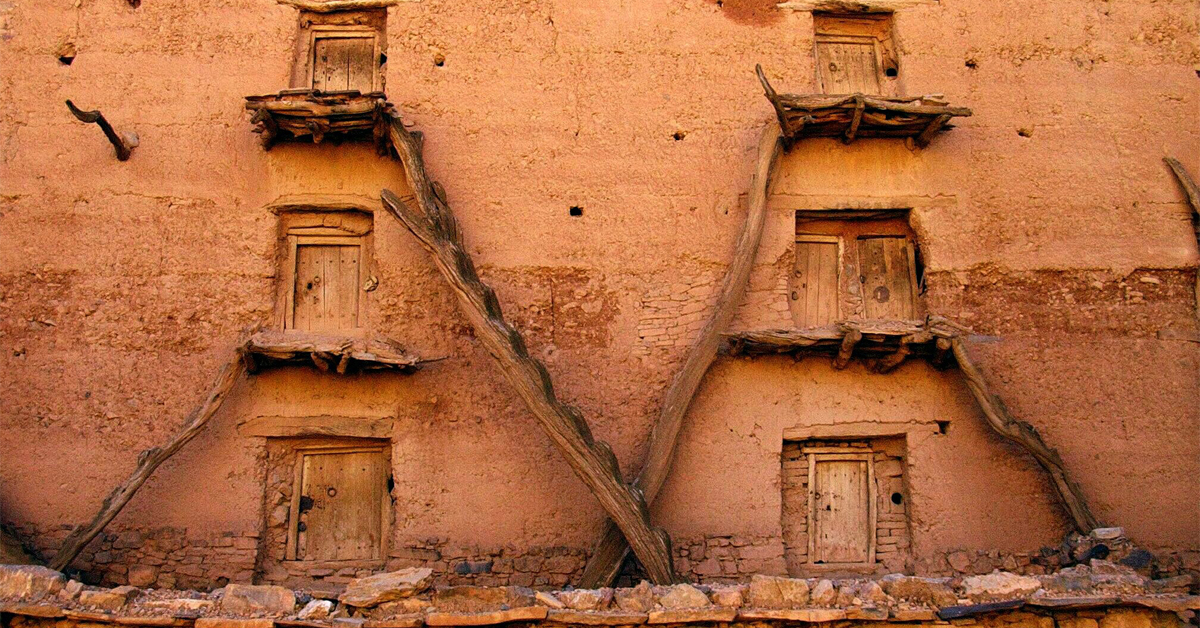The ancient berber granaries of the Anti-Atlas Mountains in Morocco, such as the Inoummar granary, Ait Kine, Agadir Imchguiguiln, and Agadir Tasguent, are compelling vestiges of Morocco’s rich historical and agricultural history. These berber granaries, nestled among the harsh and arid terrain of the Anti-Atlas, serve as physical reminders of the inventive ways our forefathers devised to overcome the obstacles provided by this difficult climate.
These granaries, which were often constructed into the mountainsides or perched on hilltops, were cleverly designed to safeguard precious grain and other important resources from both the blistering desert sun and prospective intruders. The exquisite architecture and craftsmanship of these monuments attest to the skill and resourcefulness of ancient Berber societies. Today, they offer a fascinating peek into the past as well as an opportunity for modern guests to interact with Morocco’s enduring spirit.
Collective Granary – Ait Kine
Ait Kine, 45 kilometers from Tata, is a regional heritage treasure waiting to be unearthed. The community also has a mosque and Dar Imrabtine, a very beautiful traditional home typical of the southern regions, in addition to the magnificent totally restored collective granary (early 18th century) and the seven watchtowers. Take a stroll through this town to find the covered passages that connect the little alleys. The collective granary is still functional. The beauty of the mountains is stunning from the village.
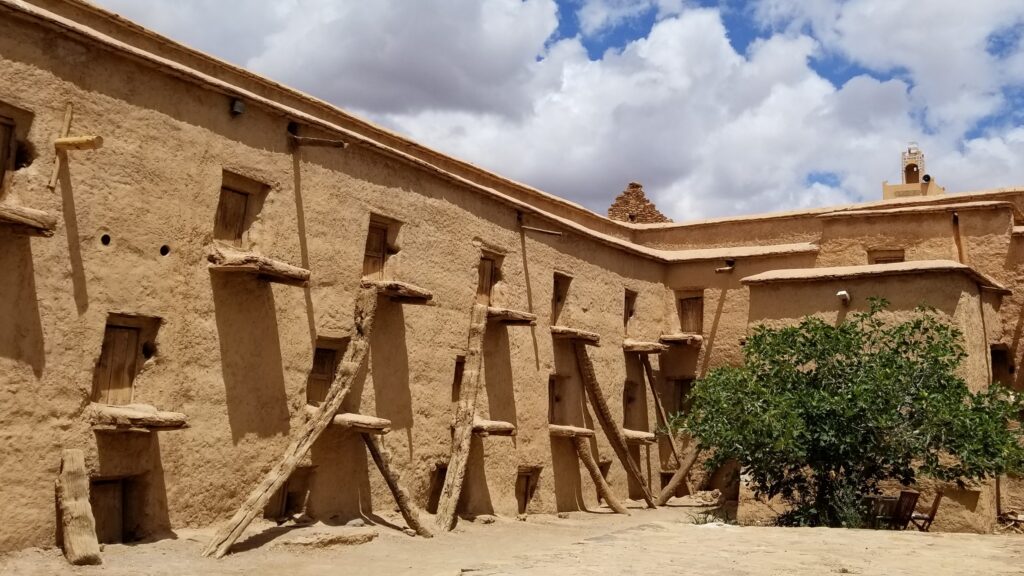
Inoumar Granary – Chtouka Ait Baha
The Agadir Inoumar was built approximately 300 years ago near the municipality of Imi Mqorn. This agadir-fortified granary typical of the Souss Massa region is a must-see when in the area. The granary’s operation will teach you a valuable lesson in community life.
The granary of Inoumar is the Western Anti-Atlas’ largest communal granary in terms of surface area. This collective granary, which overlooks the Oued Ourga, dates from the Alawite dynasty, and more specifically from the era of Sultan Moulay Ismael. Its four towers, three water towers, and two doorways are always under the watchful eye of the Amin = the guardian, who must be discovered when you arrive.
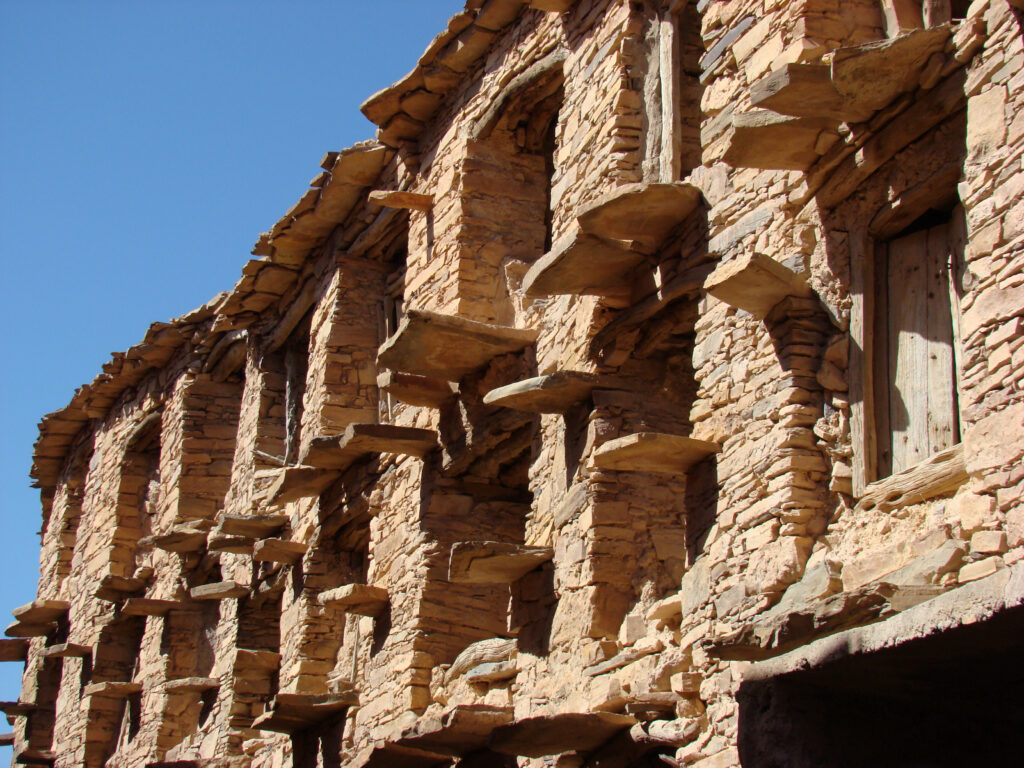
Agadir Imchguiguiln – Chtouka Ait Baha
Agadir Imchguiguiln, one of the oldest “igoudar” in the region, stands proudly in the country of Ait Baha, situated very close to Agadir. This agadir boasts a remarkable feature: a large corridor created by two spectacular rows of cottages. These cottages were historically utilized to safeguard food, harvests, as well as jewels and valuable documents. This walled granary dates back to 750 years. Recent restoration work has allowed for the renovation of approximately thirty huts, the center plaza, a mosque, and outbuildings, all while adhering to Anti-Atlas construction techniques.
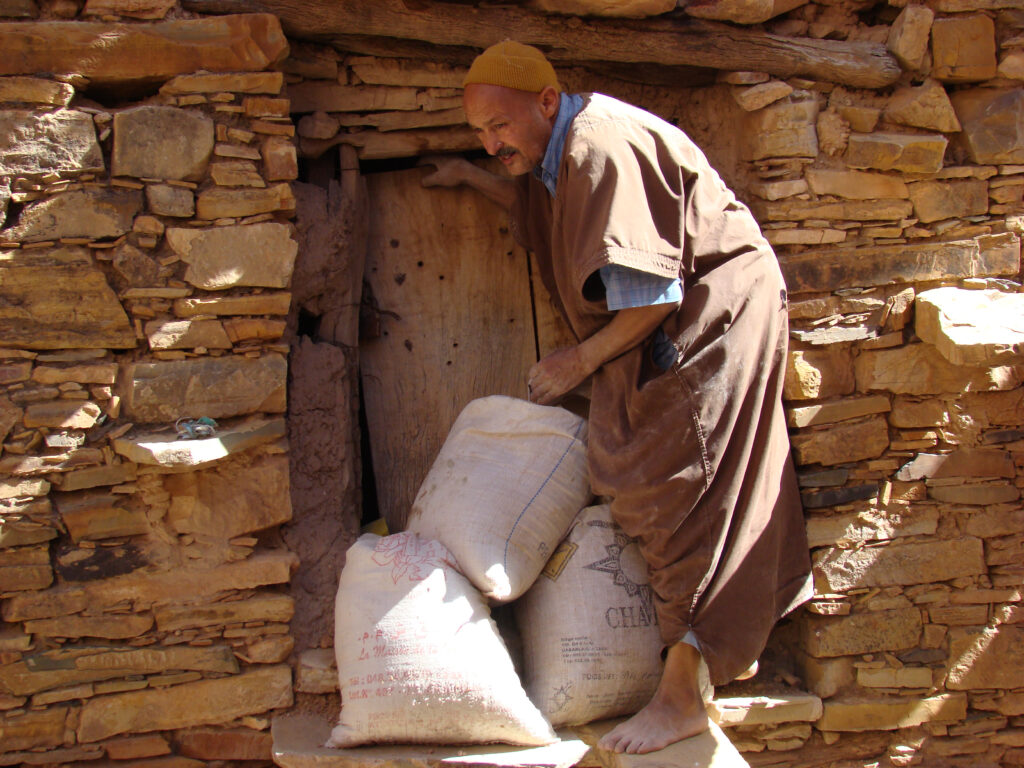
Agadir Tasguent – Tafraoute
One of the most stunning igoudar of the anti-atlas mountains may be found northeast of Tafraout. Agadir Tasguent has been around for nearly 350 years. Tasguent is one of the Anti-Atlas’ largest and best maintained sites. The agadir is mounted 6 floors high because to the space constraints of the relief chosen. Its architecture is stunning. The agadir has three courtyards connected by two covered corridors. The first tunnel provides access to the first two courtyards as well as the central square. Hundreds of cottages line its walls, which you reach by climbing stone platforms serving as stairs.
Ifri Imadidane Collective Granary
Ifri Imadidene’s granary is one of the few remaining collective granaries under rock and partly troglodyte. The granary of Ifri Imadidene, located 17 kilometers from Taliouine on the road to Ouarzazate, is a regional architectural treasure. The granary is situated beneath the water source that originates on the plateau. It is isolated from the village by cereal and almond tree fields.
This very old style of granary can also be found in the Assif Melloul valley in the Eastern High Atlas in Igherm n’Ouchtin (since abandoned), but much more intriguing in Gran Canaria with Cenobio de Valeron. The granary was rebuilt with the help of the Keepers of Memory organisation and the “Global Heritage Fund.”
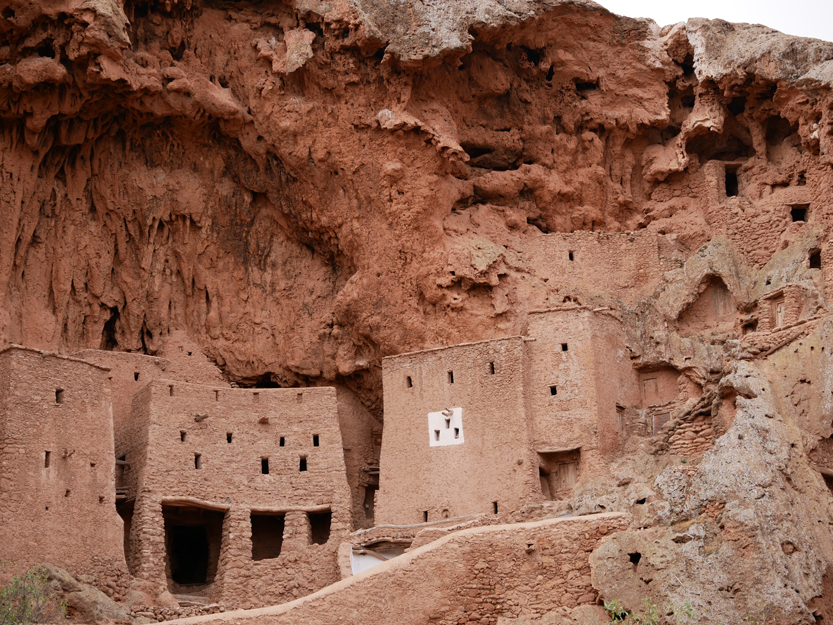
Function and Role of These Berber Granaries
The primary function of the Anti-Atlas granaries. Was to store surplus agricultural produce, ensuring a constant food supply for the local communities. These structures played a critical role in maintaining food security during times of scarcity and acted as centralized hubs for trade and distribution. Beyond their utilitarian function, these berber granaries were also symbolic of societal prosperity. They also played a vital role in the religious and cultural practices of ancient civilizations.
Cultural Significance
The Anti-Atlas Berber granaries have immense cultural significance, as they intertwine with ancient religious beliefs and cultural practices. People often regarded these structures as sacred sites, associating them with deities and fertility rituals. The granaries symbolize the close relationship between humans, nature, and the divine, embodying the spiritual connection of ancient societies.
Berber Granaries as Heritage Sites
Preserving the Anti-Atlas granaries for future generations poses significant challenges due to factors such as weathering, erosion, and human intervention. Conservation efforts, led by organizations and local communities, strive to protect and restore these ancient structures, ensuring their integrity and safeguarding their cultural legacy.
Importance of granaries as historical and cultural landmarks
The Anti-Atlas granaries serve as historical and cultural landmarks, providing a tangible link to the past. Their preservation not only helps us understand the lives of ancient civilizations but also contributes to the collective cultural heritage of humanity. These berber granaries remind us of our shared history and the lessons we can learn from our ancestors’ sustainable agricultural practices.
Visitor experiences and guided tours
Exploring Ancient Granaries of the Anti-Atlas mountains offers visitors a unique opportunity to immerse themselves in the mysteries of the past. Guided tours by knowledgeable locals and experts provide invaluable insights into the historical, cultural, and architectural aspects of these structures. Visitors can witness firsthand the grandeur and ingenuity of the ancient builders while unraveling the secrets held within the walls of these granaries.
Comparisons with Other Ancient Granaries Worldwide
The Ancient Granaries of the Anti-Atlas share similarities with other ancient granaries found in different parts of the world. From the terraced rice granaries of Southeast Asia to the adobe granaries of the American Southwest. These structures display intriguing parallels in design, purpose, and cultural significance. Exploring these global counterparts enables us to appreciate the universal human need for food security and the diverse ways it has been addressed throughout history.
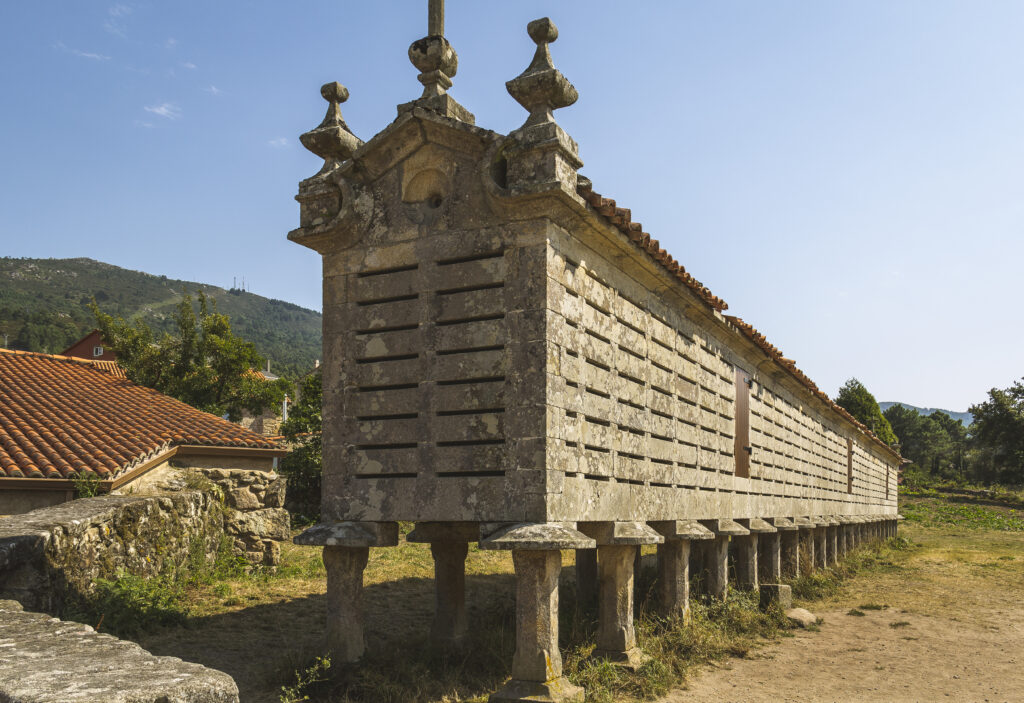
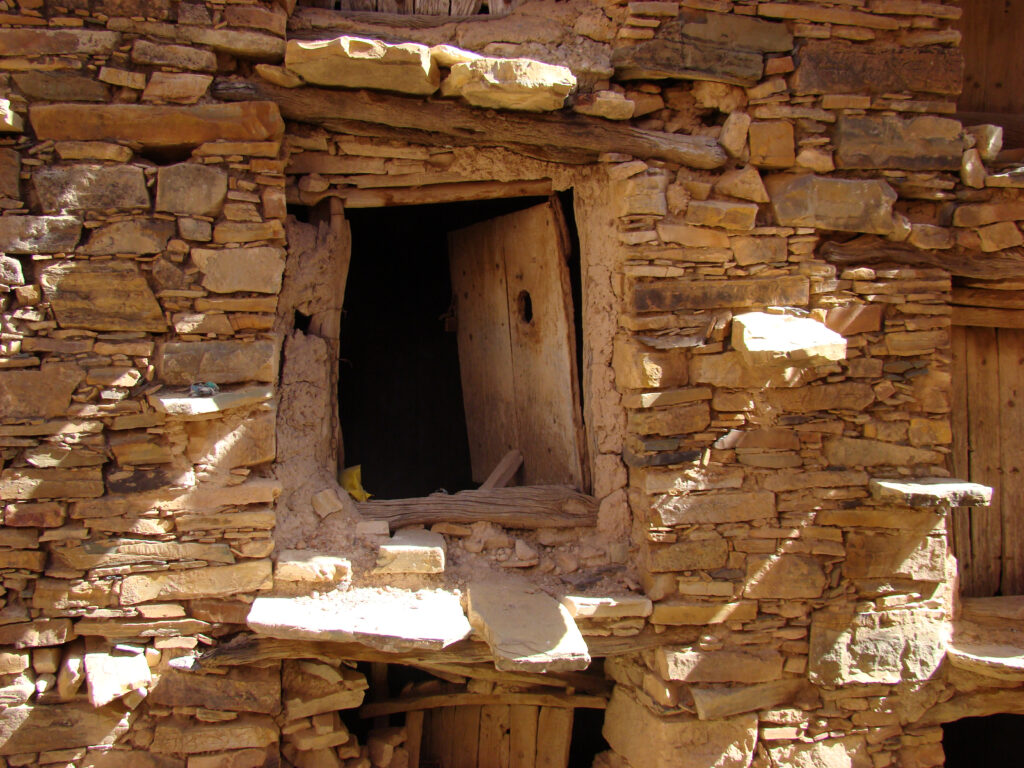
Lessons learned for sustainable agriculture and food storage
The ancient granaries of the Anti-Atlas region offer valuable lessons for modern agricultural practices and food storage techniques. The sustainable methods employed by ancient civilizations. Insights into ecological approaches like crop rotation, water management, and pest control offer actionable strategies for implementation today. Furthermore, adapting traditional storage methods to contemporary needs can enhance food security in a world facing environmental and socio-economic uncertainties.
Frequently Asked Questions (FAQs)
What purpose did the Anti-Atlas granaries serve?
The Anti-Atlas granaries were utilized to store surplus agricultural produce, ensuring food security during times of scarcity. They acted as centralized hubs for trade and distribution, playing a critical role in sustaining ancient communities.
Who built the granaries, and when?
Various ancient civilizations that inhabited the region, including indigenous Amazigh tribes and Phoenician traders, are attributed with constructing the Anti-Atlas granaries. Their exact origins and dates of construction continue to be subjects of ongoing research and archeological investigations.
How were the granaries constructed without modern tools?
The ancient builders of the Anti-Atlas granaries employed sophisticated construction techniques using locally available materials such as stone, clay, and timber. These skilled craftsmen utilized their knowledge of physics, geology, and engineering to construct these structures without modern tools, relying on their craftsmanship and resourcefulness.
Are there any rituals or folklore associated with the granaries?
People in the region attributed sacred significance to the Anti-Atlas granaries, integrating them into various rituals and folklore. These structures were seen as sacred sites, associated with deities and fertility rites. The culture embraced activities like harvest festivals, making offerings, and organizing communal grain distribution ceremonies around these granaries.
Can visitors explore the inside of the granaries?
While visitors can explore the surroundings and external features of the Anti-Atlas granaries, access to the interiors may be restricted due to preservation efforts and the delicate nature of the structures. However, guided tours provide valuable insights into the historical and cultural significance of the granaries.
How are the granaries preserved for future generations?
Preserving the granaries for future generations requires a multi-faceted approach. Conservation efforts focus on protecting the structures from weathering, erosion, and human intervention. Innovative technologies and eco-friendly preservation techniques aid in maintaining the integrity and longevity of these ancient structures.
Reflecting on the mysteries and cultural significance of the Anti-Atlas granaries fills us with a sense of wonder and reverence. These ancient marvels connect us to our collective history and remind us of the innovations, values, and spirituality of our ancestors. Embarking on a journey to discover and appreciate these enigmatic granaries is an invitation to step back in time. Embracing the rich tapestry of human existence.
Encouraging others to visit and appreciate these ancient marvels is an opportunity to inspire a deeper understanding and respect for our shared heritage. Through continued preservation efforts and exploration, the enigmatic ancient granaries of the Anti-Atlas mountains will continue to captivate and enlighten generations to come.


